Hello, fellow content writers.
I certainly don't have to tell you that content writing, as a profession, is more competitive than ever before. Just writing articles can make you a solid living, but if you're a content writer comfortable with a wide range of writing formats, you'll get far more work coming your way.
Not only does working with different types of content writing get you more work (and money), but it also helps you expand your functions, and, thus, pursue high-paying/more interesting opportunities. When your employer or client knows that you can create website copy as easily as blog posts, they would be more willing to encourage you to create interesting content for different projects.
In this article, I'll discuss the various types of content writing that professional content writers should ideally have some experience with. I'll also note down a few basics of creating great content, be it a blog post or some UX copy.
• Types of content writing frequently used on the internet (and ones which will get you work) with EXAMPLES
• Why you need a writing portfolio, no matter what type of content writing you practice in your profession
• Examples of excellent writing portfolios
• Why you should consider using Authory to create your writing portfolio — imports your content automatically AND backs everything up forever
Types of content writing in popular use on the Internet
Blog Posts
It's exactly what it sounds like. Blog posts usually refer to long-form content (articles, essays) published in a website's "Blog" section. Blog posts are among the most popular content formats in use online. This is because blogs are great for content marketing strategy.
Blog posts are quite diverse in content. They can be educational content, press releases, product announcements, event recaps, summaries of podcasts/video content, etc.
Good blogs are a low-cost way to get noticed by search engines and appeal to a brand or company's target audience. You create content that people are looking for, and people's attention leads to higher rankings on search engines like Google. Higher rankings lead to more attention & traffic, and you keep going until you hit your traffic, engagement & revenue goals.
If you're offering content writing services, you should know how to create engaging content for blog posts.
Here's a great example of a great blog post by Reid McCarter.
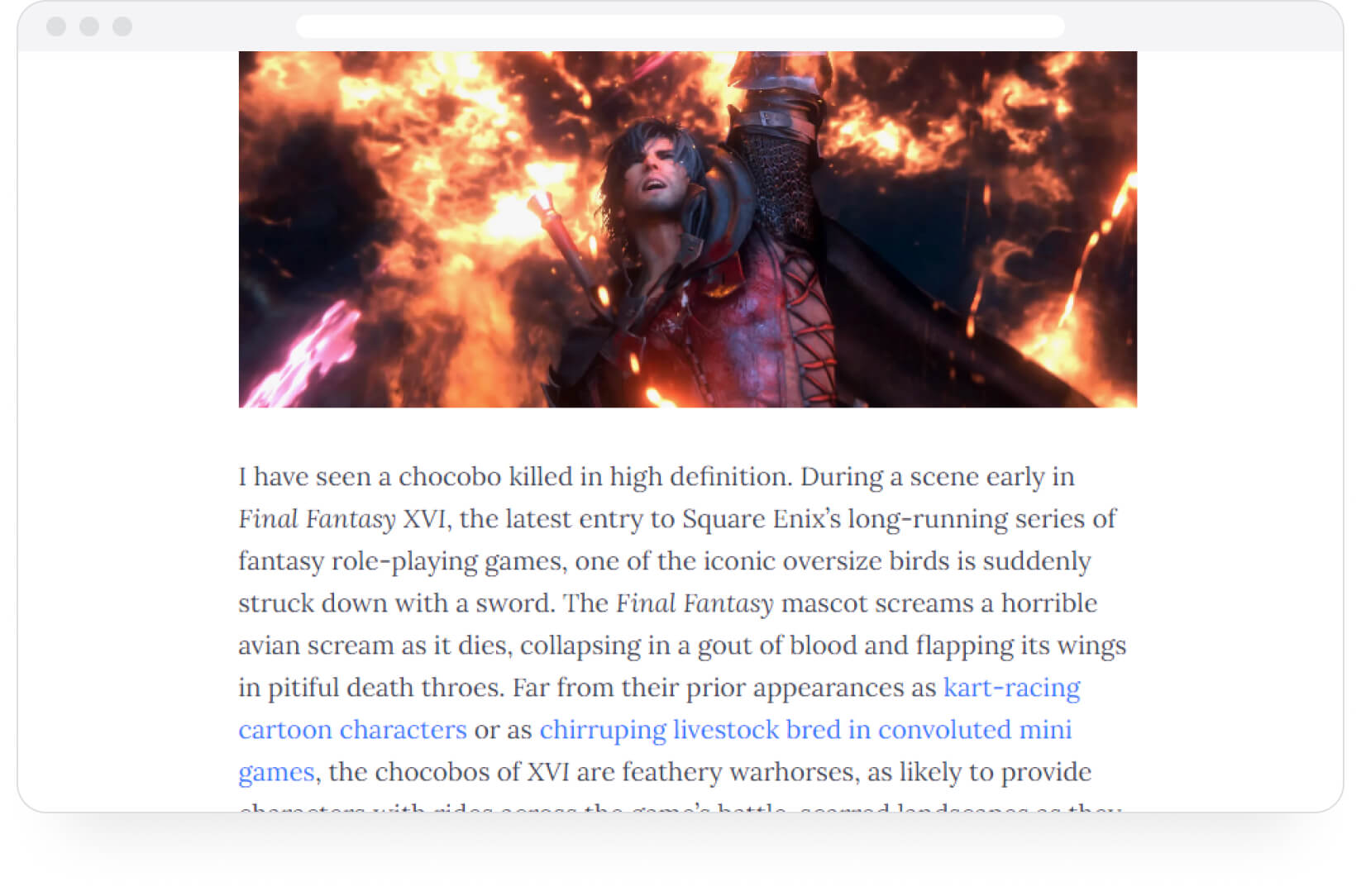
Website copy
All text you see on every page of every website constitutes website copy. Its main purpose is to help people find everything they want or need from a site. Common elements of website copy are product description, the brand's mission, vision, services page, terms, policies, and frequently asked questions.
While website copy is often pretty straightforward and descriptive, certain sites do have witty, punchy, memorable copy that directly adds to its brand value & user appeal.
A great example of such exceptional website copy is on The Marginalian.

Social media posts
Social media platforms have allowed brands, companies, and public figures to reach their target audience like never before. The ability to directly talk to the folks you want in your corner is unprecedented in human history.
What you put on social media can actively influence people, and draw them towards you. The same goes for every company, organization, and person out there. Your employers would love to create & publish social media posts that provide real value to their followers, who, in turn, engage with said brand's page in more meaningful ways. The power of a great social media post is most apparent in every viral post you see and hear about. If it strikes the right nerve, it doesn't take much for social media content to gather unimaginable reach and positive attention.
As a content writer, the ability to write social media posts that grab eyeballs will make you an extremely coveted candidate. You don't have to be good at writing for every single platform. Just zero in on the big ones — Facebook, LinkedIn, Twitter — or the ones your employer cares about — and get good at creating high-quality content for those channels.
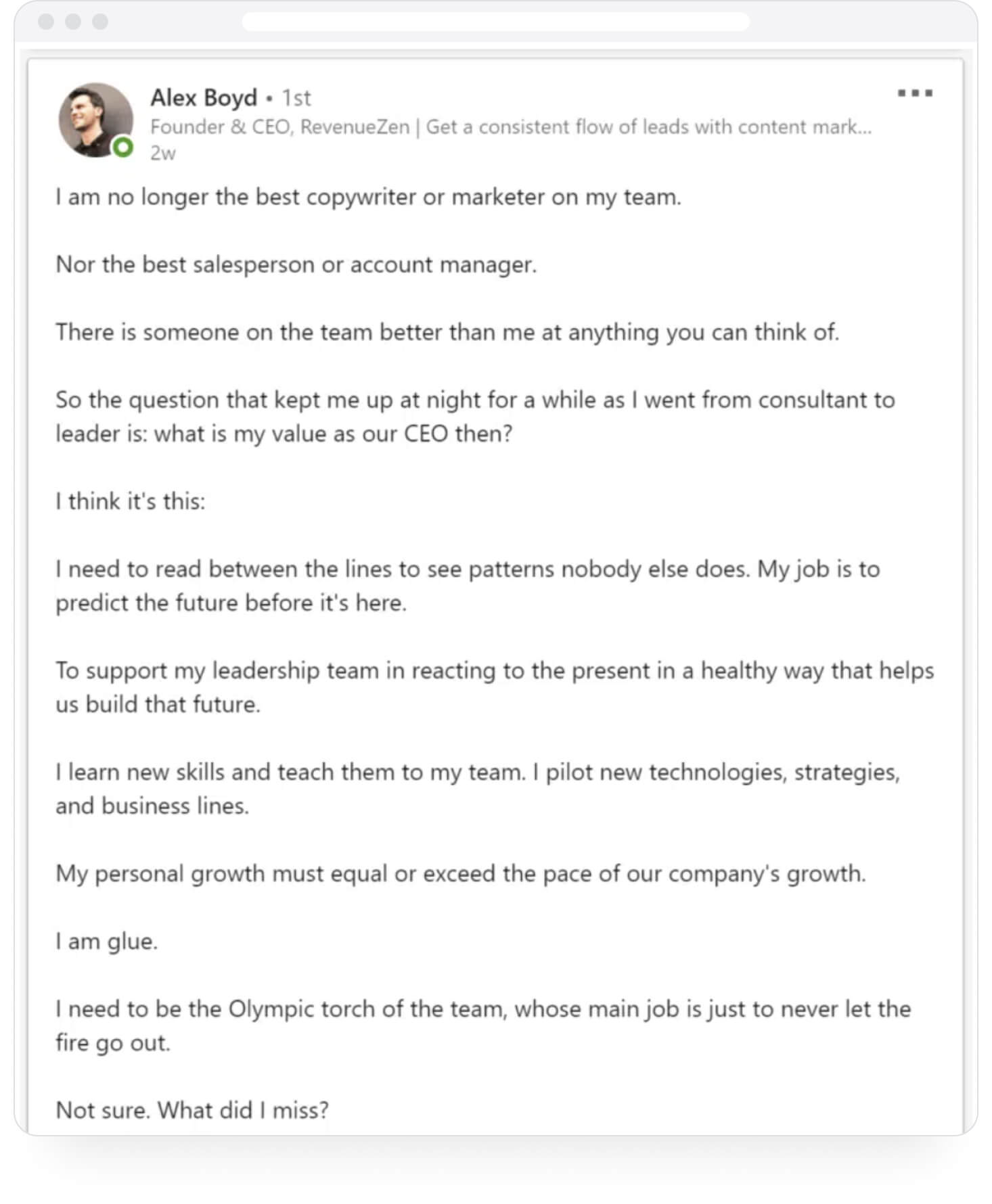
Ad/sales copy
Good ad copy is among the most lucrative forms of content writing out there. Both full-time and freelance writers can make serious money (and get creative) with a copywriting career. If your writing can get potential customers to take a desired action, you'll never be out of a job.
All ad copy, including those on emails, newsletters, search engines, landing pages, banner ads, etc., seeks to drive some action, usually a click. But given the immense competition out there, good ad copy is in steady demand.
Of course, different platforms require different formats & vocabulary in their ad copy. So, you'll have to stay up to date on your digital linguistics, so to speak.
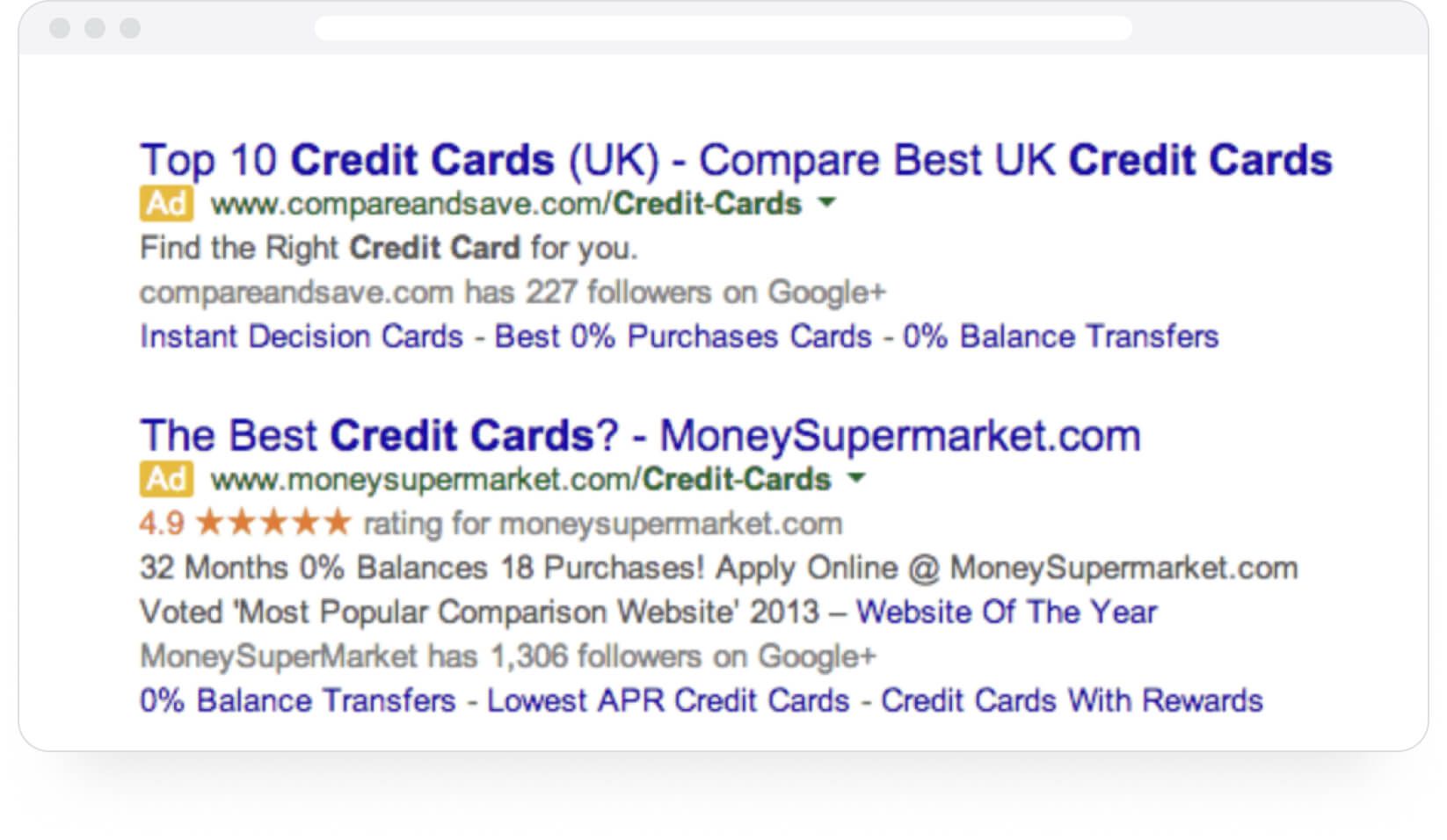
Technical writing
Technical writing, in its basic definition, involves taking complex concepts and disentangling them into formats that are easier to understand — manuals, white papers, product documentation, guides, etc.
Generally, technical writing has to do with dissecting and diluting concepts related to technology of some kind (it's right there in the name). Technical writers, especially those working on documentation, usually carry some form of industry expertise, commonly in the realms of engineering, software development and usage, healthcare management, and the like.
A task that technical writers often undertake is creating educational material that helps customers with using one or more products. It can also be helpful for a company's internal functions, allowing employees to use a project management tool effectively, generate appropriate reports for management, or navigate issues with back-end systems.
Given the specialization required in this department, there are almost never enough technical writers in the market. So, get good and this & you'll be rolling in work.
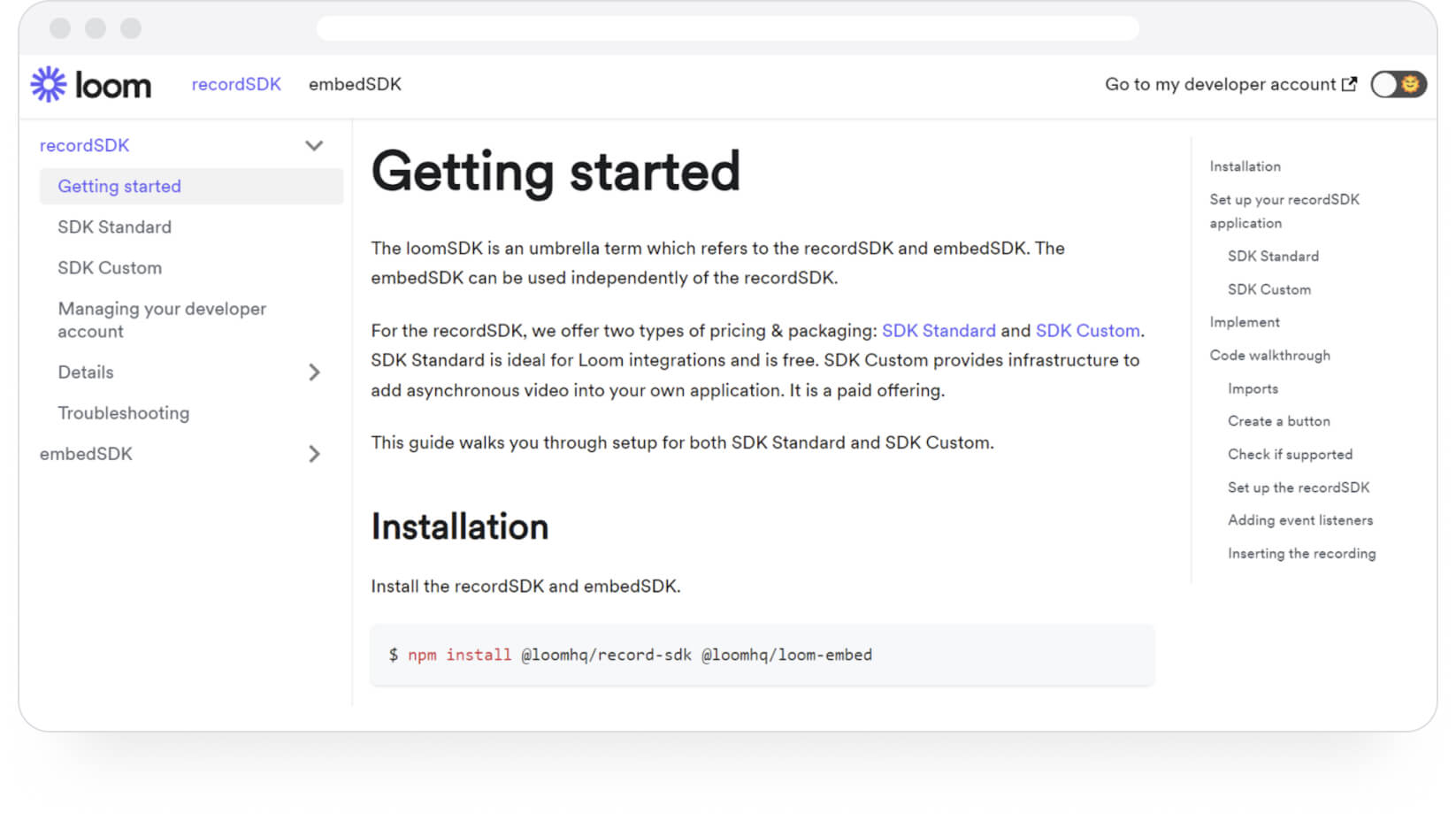
Read More: How To Create a Technical Writing Portfolio (with Examples)
UX writing
Expertise in UX writing will also keep you in healthy demand. As a UX writer, you create the text on the buttons, arrows, and labels that show up to guide a user along their digital journey. As an example, think of all the text that guides you along as you install a new app. That's UX writing.
It might seem easy, but creating instructions that are simple yet comprehensive enough to help every user across regions, countries, and even continents. Crack that code, and you'll be sought after for your skills in precision and flow.
To be a successful UX writer, you'll need some understanding of software design and customer personas. You need a sense of how the customer thinks so that you can give them the exact instructions they need to get the work done.
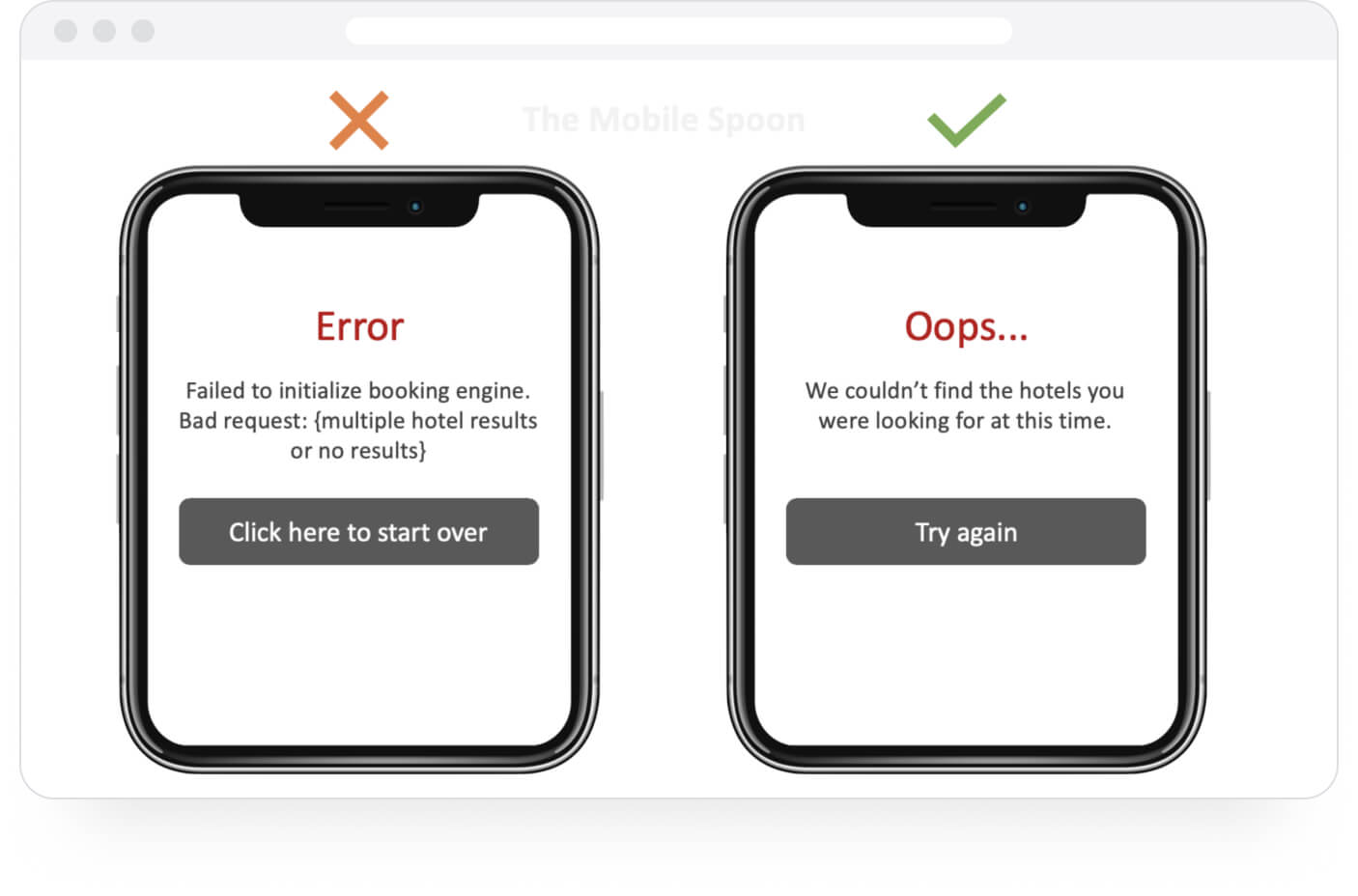
Case Studies
Cast Studies exist in every single professional discipline, industry, psychology, medicine, education, anthropology, political science, and social work. In academic disciplines, it showcases situations in which a certain environment was affected by certain external/internal factors or changes. The intent is to learn about a situation as comprehensively as possible so that those learnings can be applied to the world at large.
In the corporate realm, case studies detail the process in which a product or service (of the company writing the case study) transformed the client/customer's life in a meaningful and sustained way. For example, a case study for a communication software company might show how purchasing & using said software allowed a client (another company) to increase employee productivity across the board by 15% in one quarter.
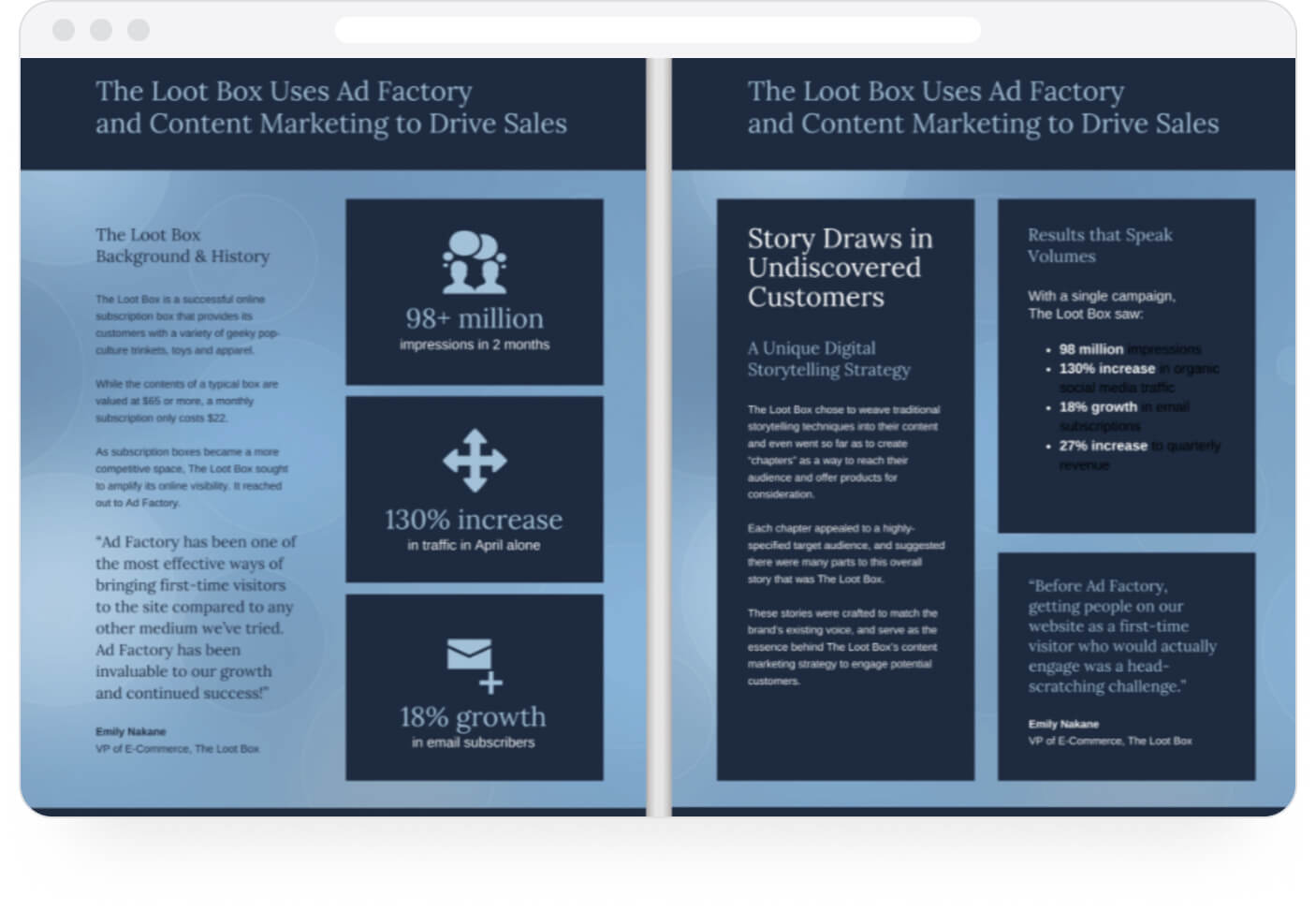
White Papers & E-Books
White papers and e-books dive deep into topics. They are not meant for 2-3 minutes of reading, which is what most articles on Google search will be. White papers and e-books painstakingly break down the nuances of a single topic and are often used for in-depth research.
Generally, these forms of content writing appeal to seriously interested potential buyers of a product or service — potential customers already like what they see, and now they want to understand everything about it before putting down their money.
If you're creating content for such digital assets, you'll not just have to be good at writing, but also at digesting and translating complex topics. You won't necessarily have to dumb things down, since readers of such material have significant industry experience. But you will have to organize and present the material in a linear, logical progression that makes sense to domain experts and SMEs (subject matter experts).
E-books & white papers also require design input to convey their points most effectively. If you're explaining the internal mechanics of irrigation equipment, you'll need diagrams to get your point across. Thankfully, this is not a skill writers are expected to have, but if you did have them, you would be unstoppably employable.
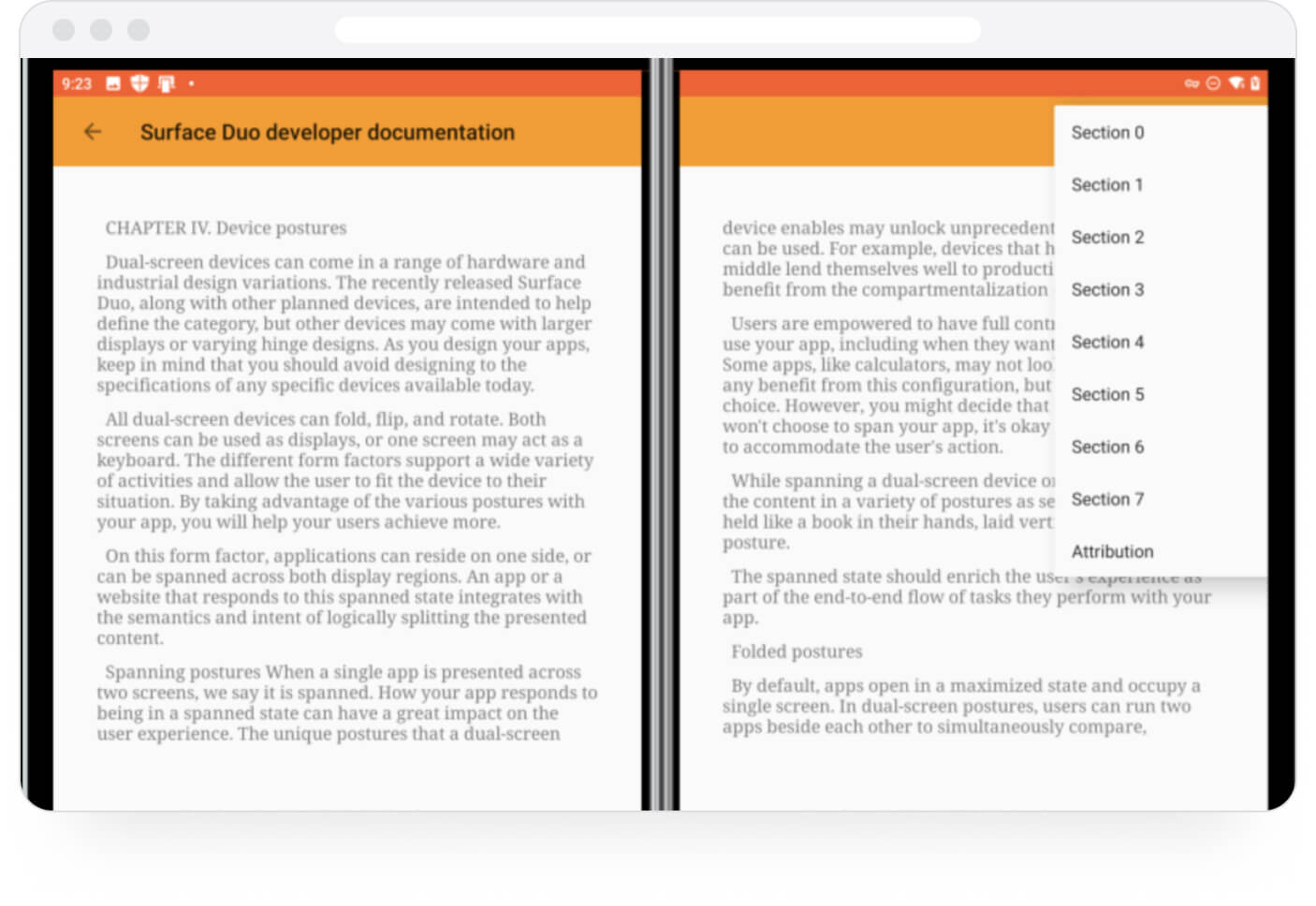
Now that you know the major categories of content writing, you're good to go. But, in case you're starting out on your content writing journey, here's a little (unsolicited) advice. But first, a question.
Have you created your writing portfolio yet?
You could be an effortless expert at every single type of content writing mentioned above, and you'll still have trouble landing gigs if you don't have all your writing in a professional writing portfolio. A writer is defined by their work... and a professional writer shows their work in their professional online portfolio.
A portfolio should showcase all (or most) of your previously published work in one organized place. Clients should be able to open your portfolio and get all the information they need — your name, bio, contact info, work samples, client testimonials, etc.
They should be able to scroll through and search for relevant keyword-related topics/titles, check out your social media accounts (if you have any for professional posting), and get a high-level sense of your skillset.
Of course, there's a lot more that goes into creating that immaculate writing portfolio, but I can't mention everything here. If you're interested, do have a look at my detailed take on the matter in Writing Portfolio 101: What It Is, What It Should Include & How to Build One Really Fast.
However, I will leave you some examples of excellent writing portfolios comprising diverse types of content writing.
Examples of great writing portfolios
David Pogue
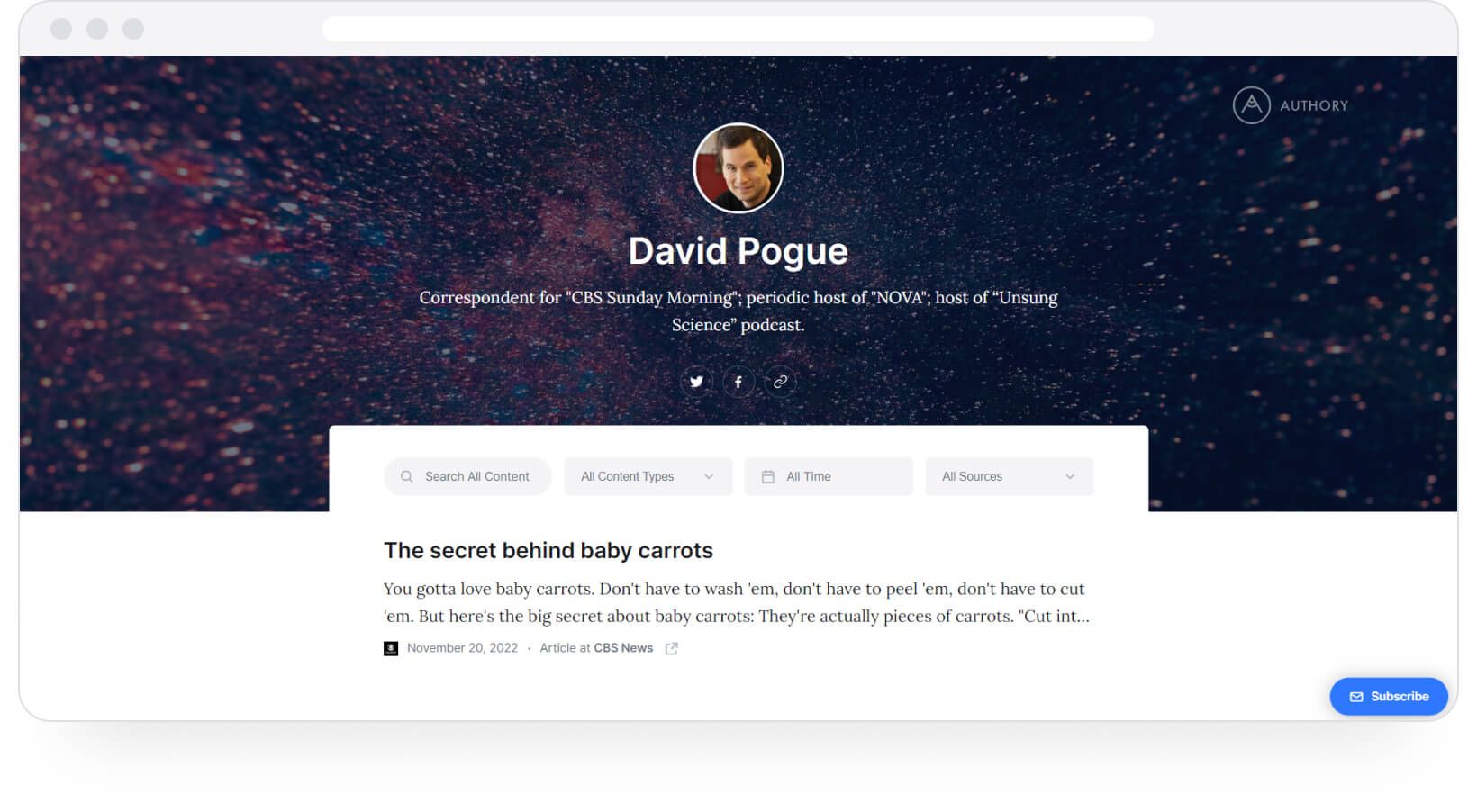
David Pogue is a six-time Emmy winner, a New York Times bestselling author, and a five-time TED speaker. He is also a correspondent for "CBS Sunday Morning," a periodic host of "NOVA;" as well as the host of the “Unsung Science” podcast.”
Erin Rupp
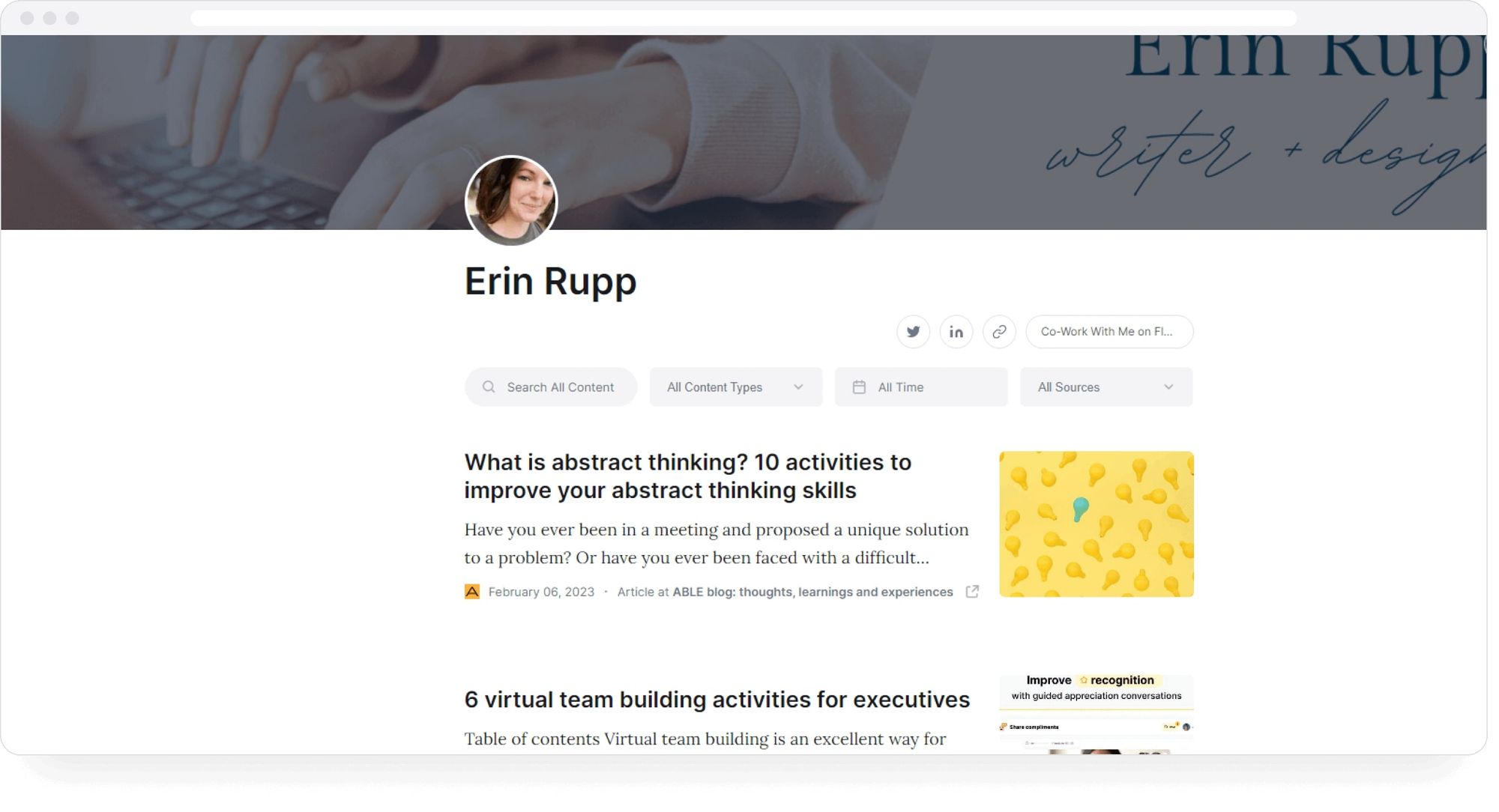
Erin Rupp writes about productivity, well-being, and self-development. Her work stands out because of her depth of research, as well as insights from her own experiences.
Alex Hargrave
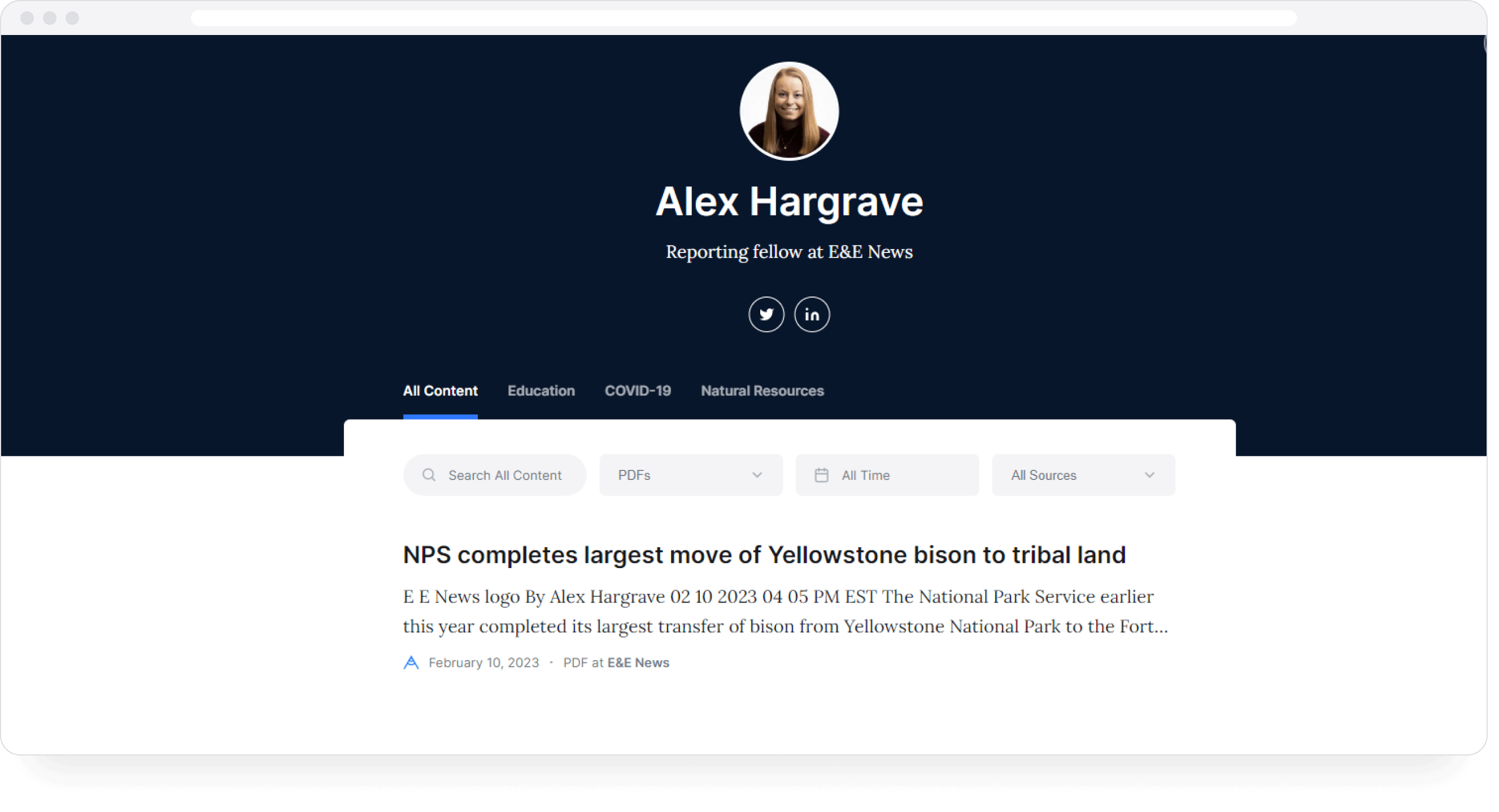
Alex Hargrave is a Reporting fellow at E&E News. Her portfolio page showcases a number of impressive writing samples (some of them in PDF).
All three portfolios were created by Authory, a portfolio-building tool that actually builds your portfolio for you. No, seriously, it does like 90% of the work.
Why Authory should have the honour of helping you build your writing portfolio
Authory doesn’t just give you the space to copy-paste links and assemble a digital portfolio. It literally does over half the work: finding all bylined content you’ve ever published, importing it automatically, saving it permanently (again, automatically), and enabling you to organize your pieces into different collections.
A self-updating portfolio (no need to keep adding new work manually)
Authory will AUTOMATICALLY import a copy of every bylined piece from every site into its own database.
These sites are called "sources." You add as many sources as you want, and every single bylined piece from every single source will be imported automatically.
You don't have to track down links to your published work (especially older pieces). As long as you remember the URL of the site where your work exists, Authory will collate all your content for you in one dashboard.
Authory can import content from behind most soft paywalls (as long as it is a bylined piece) and some hard paywalls. However, it cannot be used to import copies of articles, podcasts, and videos you haven’t created or featured in.
Automated backups (never lose your content, ever)
All the content that Authory imports from different sources is saved permanently. Even if the original website where it's published goes defunct for any reason, you'll always have a copy safely stored on Authory's server.
All backups are in the original format — text and/or media. No screenshots.
Continued importing of past and future content (less effort for a 100% updated portfolio)
Once you enter a source, Authory won't just import your existing publications. Anything you publish on the same site (after you've fed its URL into Authory) in the future will also be imported automatically. In other words, Authory will import your past and future content.
Authory also sends email notifications for every new piece it imports, so you'll always know if something you submitted has been published.
Apart from these, you also get a slew of miscellaneous but necessary features:
- Ability to search through both your portfolio and your content database to find articles/audio/videos based on keywords. Prospective employers and hiring managers can use this to look for topics on your portfolio, and you can use it to find specific pieces within your Authory content bank.
- Ability to create a custom domain with a click.
- All imported content can be downloaded as high-res PDFs or exportable as HTML files — no lock-in period.
- Get a custom domain and personalize your portfolio even further.
- Multiple, low-effort options for customization to make your portfolio visually appealing and easy to navigate.
- In-built analytics that provides real numbers on content performance (engagement, readership) across the web and popular social media sites every 30 days. You get to see how your readers/viewers are responding to your work.
- Allows creation of newsletters with a couple of clicks. After setup, Authory will automatically send your newly published content to subscribers.
- Widgets to display your personal portfolio on other sites, such as your personal website (if you have one).
Authory has been chosen by quite a few well-known writers. These are people who could have picked any tool in the world but decided that Authory best met their needs. There's 6-time Emmy award winner David Pogue, Steven Levy, Editor at Large, WIRED, and Brian Fung, a Technology Reporter at CNN, to name a very few.
But, it's only your opinion that matters, and no one else’s. And, you should absolutely create said opinion by actually using the tool.
Get started with Authory for free and see for yourself what works for you!



